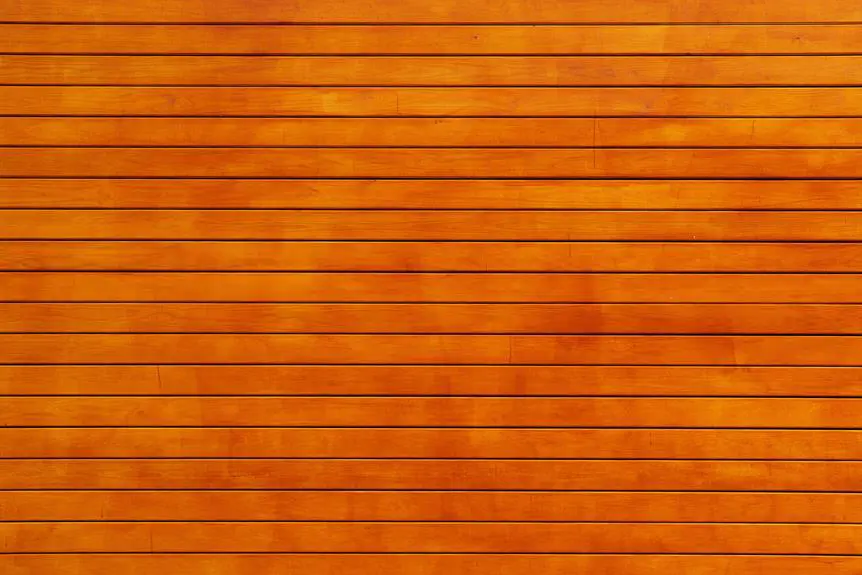So, you've found that perfect piece of wood furniture, but the finish is scratched and worn. Don't worry, covering it with fabric is easier than you think!
In just 5 simple steps, you can give your furniture a fresh new look.
First, gather your materials and tools.
Then, prepare the wood surface for the fabric.
Next, carefully cut and attach the fabric, making sure it's smooth and wrinkle-free.
Add some finishing touches, and voila! You have a beautifully updated piece that looks brand new.
Whether it's a chair, table, or any wood surface, this method is a great way to revitalize your furniture with a personal touch.
Key Takeaways
- Choose a fabric that suits the project's intended use and aesthetic, considering texture, color, and durability.
- Prepare the wood surface by cleaning it thoroughly, sanding it with fine-grit sandpaper, and sealing it with a suitable primer or sealer.
- Accurately measure and cut the fabric to fit the wood surface, and use an appropriate adhesive to attach it, smoothing out wrinkles and folding the overhanging fabric for a clean finish.
- Add finishing touches such as decorative trim or upholstery tacks, multiple fabrics or embellishments, and a clear sealant to protect and enhance the fabric's visual appeal.
Gather Materials and Tools
To cover wood with fabric, you'll need to gather the necessary materials and tools.
Start by gathering supplies. Choose a fabric that suits the intended use and aesthetic of the project. Consider the texture, color, and durability of the fabric.
Once you have the fabric, select tools that will make the job easier. You'll need a measuring tape to measure the wood accurately. This ensures that the fabric will fit perfectly and look professional. Additionally, you'll need a staple gun to secure the fabric to the wood. Make sure the staples are appropriate for the thickness of your wood and the type of fabric you're using.
Having the right tools will make the process smoother and the end result more polished. By gathering the right supplies and tools, you're setting yourself up for success when covering wood with fabric. This preparation will make the remaining steps of the process much more manageable.
Prepare the Wood Surface
First, measure and cut the fabric to fit the wood surface, ensuring a precise and snug fit.
Before applying the fabric, it's crucial to prepare the wood surface properly. Begin by thoroughly cleaning the wood to remove any dust, dirt, or residues. Use a mild detergent and water to wipe down the surface, and allow it to dry completely.
Next, examine the wood for any rough spots, uneven areas, or imperfections. Sand the surface gently with fine-grit sandpaper to create a smooth and even base for the fabric.
Once the wood is smooth, consider sealing it with a suitable primer or sealer to prevent the fabric from absorbing any moisture from the wood. This step also aids in achieving a more polished final result.
Additionally, carefully choose the fabric that best suits your project, considering factors such as color, pattern, and texture. Ensure that the fabric complements the wood and fits the overall aesthetic you desire.
Cut and Attach the Fabric
Once the wood surface is prepared, measure and cut the fabric to fit precisely, readying it for attachment in the next step.
Here's how to successfully attach the fabric to the wood:
- Measuring fabric: Ensure that the fabric is measured accurately to fit the wood surface, allowing for a slight overhang to wrap around the edges.
- Choosing adhesive: Select an appropriate adhesive for the project, such as spray adhesive or fabric glue, ensuring it's compatible with both the fabric and the wood.
- Attaching fabric: Apply the chosen adhesive to the wood surface in a thin, even layer, and carefully lay the fabric over it, smoothing out any wrinkles or bubbles as you go.
- Smoothing edges: Once the fabric is in place, carefully fold the overhanging edges around the wood, securing them with the adhesive and ensuring a clean, smooth finish.
- Finishing touches: Allow the adhesive to dry completely before moving on to the final step, ensuring that the fabric is securely attached and free of any imperfections.
Finishing Touches
Ensure the adhesive has fully dried before proceeding to the final step, to guarantee a flawless and secure attachment of the fabric to the wood surface. Once the adhesive is dry, take a moment to admire your handiwork.
Now, let's talk about the finishing touches. This is where you can really let your creativity shine. Consider the fabric patterns and design options available. You can add decorative trim such as ribbon or upholstery tacks along the edges for a polished look.
If you want to get even more creative, consider using multiple fabrics to create a patchwork effect or adding embellishments like buttons or fabric flowers for a unique touch. Another option is to apply a clear sealant over the fabric to protect it from wear and tear. This can also add a subtle sheen to the fabric, enhancing its visual appeal.
Admire Your Updated Piece
After the adhesive has fully dried, take a moment to admire your updated piece, appreciating the transformation from wood to fabric and the personalized finishing touches you've added. It's truly gratifying to see your vision come to life.
Here are some key things to consider as you admire your handiwork:
- Adhesive Options: Reflect on the adhesive you used and how it contributed to the overall success of the project. Whether you chose a spray adhesive, fabric glue, or another option, take note of its effectiveness and ease of use.
- Color Coordination: Observe how the fabric complements the surrounding decor. Consider the color scheme and how the newly covered piece enhances the overall aesthetic of the space.
- Texture and Detail: Take a closer look at the texture of the fabric and the intricate details of the pattern. Notice how these elements add depth and character to the piece.
- Personalized Finishing Touches: Whether it's decorative trim, contrasting fabric panels, or other embellishments, appreciate the personalized touches that make the piece uniquely yours.
- Overall Transformation: Step back and admire the overall transformation. From a plain wooden surface to a customized fabric-covered masterpiece, revel in the satisfaction of a job well done.
Frequently Asked Questions
Can I Use Any Type of Fabric to Cover Wood, or Are There Specific Types That Work Better for This Project?
You can use various types of fabric to cover wood, but some work better than others. Consider factors like durability, texture, and stretchiness. Depending on the project, some fabrics may require prepping or treating the wood surface before applying.
Is It Necessary to Use a Primer or Sealant on the Wood Before Attaching the Fabric, and if So, What Type Should I Use?
Yes, it's necessary to use a primer and sealant on the wood before attaching the fabric. Use a fabric-friendly primer and a clear sealant to ensure the fabric adheres well and maintains its appearance.
How Do I Ensure That the Fabric Is Stretched Evenly and Smoothly Over the Wood Surface Without Any Wrinkles or Creases?
To ensure smooth application, stretch the fabric tightly and evenly over the wood. Consider color and pattern options for a personalized touch. Choose durable fabric to withstand wear and tear.
Are There Any Special Considerations or Techniques for Covering Curved or Irregularly Shaped Wood Surfaces With Fabric?
When covering curved or irregularly shaped wood with fabric, use upholstery tools and techniques for fabric stretching. Pay attention to wrinkle prevention by adjusting the fabric carefully. It's important to ensure a smooth and even finish.
What Are Some Tips for Maintaining and Cleaning the Fabric-Covered Wood to Ensure It Stays in Good Condition Over Time?
To keep your fabric-covered wood in top shape, use these cleaning tips and maintenance techniques. Regularly vacuum or brush the fabric to remove dust and dirt, and spot clean any stains with a gentle fabric cleaner.
- What Is Vegan Suede Fabric Made Of? - July 12, 2025
- Is Suede Fabric Warm? Suede as a Winter Fabric - July 12, 2025
- How to Remove Grease and Oil From Suede Fabric - July 12, 2025






